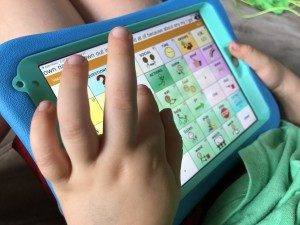
What are AAC Devices?
AAC devices are augmentative/alternative communication systems that allow a person to communicate with those around them without speaking. There are many different types of AAC but the most common are high-tech AAC Devices that allow a person to push a button to speak a message. These are helpful for children or adults who have either lost the ability to speak or who are not able to speak well enough to clearly communicate everything that they want to say. This includes some children with conditions such as autism, childhood apraxia of speech, and other types of speech/language delays. These devices are sometimes called “communication devices” or “talkers”.
Types of Communication Devices for Kids
There are many different types of communication devices for children ranging from very high tech and complicated down to a simple page with pictures to point to. Here are a few of the different types of AAC devices that you might run across for use by children. An AAC evaluation team will be the best people to determine what type of AAC system is best for each child.
Low-Tech AAC Systems:
There are many options for AAC systems that don’t require much technology at all. Children can use gestures or sign language to communicate or point to pictures on a piece of paper. This is a great place to start if you’re wondering if a child will be a good fit for an AAC system. You can find a printable AAC board in our AAC Starter Kit. Or, here are some other examples of no-tech AAC systems:
- Gestures: like nodding and shaking head or pointing
- Sign Language
- Simple picture boards: click here to see how you can make a DIY communication board at home
- Pen and paper: if the person can write or draw, they can use this to communicate
- Letter boards: again, this is for people who are literate, they can point to the letters to spell what they want
- Communication Books: you can put together several pages of pictures and put them in a small binder so the person can flip through and find the picture they want
Mid-Tech AAC Devices:
The next level up for AAC devices and systems would be those that require some technology but aren’t the top of the line. These are often simpler to use and cost less money. These devices often speak a message out loud for the person after they push a button, but they don’t have fancy touch screens that can change with each button push. Here are some options in the mid-tech range:
- Big/Little Mack by AbleNet: This company makes a line of buttons you can push that will speak a message. They come in big and little sizes and you can even get 2 or 4 buttons together to allow the child to make choices. This is great for early, beginning communicators.
- Go Talk Line by Attainment Company: This company makes a line of devices that have anywhere between 2-32 buttons. You print a piece of paper with the pictures you want and slide it into the device.
- 32-Message Communicator by Enabling Devices: This one is a larger device with spots for 32 pictures that you choose.
High-Tech AAC Devices:
The fanciest AAC devices that you will see have all of the bells and whistles. These are often touch-screen devices that will show the user different choices based on what they push. They will speak the message and allow a lot of customization, such as letting the user enter a whole sentence before it speaks. These devices can be customized to make them easier for beginning communicators and then they can grow with them as they are ready for more options. These devices also can come with equipment to allow users to make selections with only eye gaze or with adaptive switches if they are unable to push the buttons with their fingers. Here are some examples of high-tech devices.
- AAC Apps: Many AAC companies make app versions of their devices so you can download them on a smart phone or tablet for the child to use. These are often cheaper than purchasing a dedicated device. Some popular apps are TouchChat, Proloquo2Go, and LAMP Words for Life.
- Dedicated Devices: A dedicated AAC Device is one that will only be used for a child’s communication device. These are generally more durable and may have additional hardware that makes them better for use as communication devices. You will also avoid the problem of the child going away from their communication app to play a game or do something else on the tablet. Some popular device makers include: PRC Devices, Saltillo Devices, and the QuickTalker by AbleNet (that works with any AAC app)
How to Get an AAC Device for your Child
If you are looking to get an AAC Device for your child, the best place to start is by seeing a licensed speech-language pathologist or professional in your area. This person can help you determine the best type of AAC system for your child and may have ideas of how you can obtain one locally in your area.
Insurance will sometimes cover the cost of a device or app so you may be able to go through your child’s health insurance program. Local public schools can also sometimes provide a device to be used while the child is at school, especially if it is determined that the child requires this type of assistive technology to make progress at school. Finally, there may be local public agencies that can help with funding and/or loaning of AAC devices.
What Skills Does a Child Need Before He/She Can Use an AAC Device?
In short, there are no skills that a child must master before he is allowed to try using an AAC Device. We begin speaking to children as soon as they are born and we don’t require them to master any skills first. The same is true for exposing them to communication using an AAC Device or system. Sometimes, we will hear that children must understand cause and effect or know a certain amount of language before they use the device. Fortunately, use of AAC devices can actually help a child learn those skills so they are not necessary before we begin.
For more information about why children DON’T need any particular skills to begin AAC, click here!
Will an AAC Device Prevent a Child from Speaking?
In short, no! This is a common concern of parents and educators working with children who aren’t yet speaking. Fortunately, much research has been done in this area and it has been found that using AAC systems and devices does not prevent children from learning to speak. In fact, it can actually help them learn to speak more quickly because it relieves the pressure of speech since they know they have a backup way of communicating if their speech isn’t sufficient.
Research on impacts of AAC on speech development:
How to Teach a Child to Use an AAC Device
One of the hardest parts about using alternative and augmentative communication or AAC devices with children, is knowing what to do with it once you have it. AAC devices are any device that allows a child to use language to communicate other than spoken speech. Some children use sign language, others use AAC devices that will speak when a button is pushed.
No matter what the child is using, it can be tricky to figure out how to incorporate it into a child’s everyday life, either at school or at home. Well here’s the trick, are you ready for it?
Teach a child to use AAC devices and systems in the same way you would teach them to speak.
Ok, I know it sounds simple but it’s much harder in practice than it sounds. Here are my ideas for how you can implement this at home or at school:
1) Have Someone Who Specializes in AAC Devices Find a Good Fit
Obviously, the first thing that needs to happen is for the child to get fitted for an AAC device. This is something that should be done by a good AAC evaluation team. These teams are usually made up of a speech-language pathologist who specializes in AAC as well as an occupational therapist who can give input about the motor components of using AAC devices. There are many ways for children to activate AAC devices and they will know which one is right for the child.
Some children will activate the device by pushing a button with their finger. This is the most common method. However, there are children who have significant motor problems and this may not be a reliable way to use their device. For these children, you will need an alternative means to activate the device, such as a switch that when pushed will stop a light that is scanning past the buttons. When the light is stopped, it will speak whichever message it is on. Other systems have the ability to track your child’s eye gaze and will speak whichever button the child looks at for a few seconds. There are other ways to activate the device as well so speak with the evaluation team about the best method for your child
2) Get Everyone Familiar with the Child’s AAC Device
How Typically-Developing Children Learn to Talk:
Typically-developing children learn to talk by being around adults and older children who have a good mastery of their language. These adults and communication partners are familiar with their language and know how to use it. In other words, they are comfortable speaking and talking to the child.
How Children with AAC Learn to “Talk”:
Each child should have gone through some sort of therapy or evaluation to determine what means of communication is best for him and his family. Regardless of what method that was chosen (sign language, picture communication, picture board, speech output device), the adults who are going to be communicating with the child need to be comfortable with it. Just as a family that speaks only Chinese would have a hard time teaching their children English, the child you’re working with will have a hard time learning to use his AAC device if you don’t know how to use it either.
Take some time to get familiar with the AAC device or system. If it is sign language, take time to learn as many signs as you can. If it is a device that speaks when buttons are pushed, take it home for a weekend and practice creating sentences with it. Can you hold a conversation with your partner or a friend using your child’s AAC device? You should definitely try.
3) Model Using the AAC Around the Child
How Typically-Developing Children Learn to Talk:
Typically-developing children hear their native language being spoken around them constantly. They hear language being used for an entire year before they start to speak their own words. They hear adults use their language to communicate with them and with each other.
How Children with AAC Learn to “Talk”:
Children need to see their AAC device being used around them. If they never see anyone communicating with the AAC device, why would they be motivated to use it themselves? If your child is using sign language, sign along when you speak to your child or to other adults when your child is around. You don’t have to sign every word (especially at first when you don’t know all of the signs), just sign the ones you know.
If your child is using pictures, show him the pictures as you say those words. For example, if you’re asking your child if he wants a cracker, show him the picture for cracker as you say it. If your child has a speech output device that talks when you push a button, push the buttons along with whatever you’re saying. Again, you don’t have to push a button for every word you say, just hit the important ones.
Just as children with typical speech need to hear their language A LOT before they are able to begin using it, the child you’re working with needs to see his AAC device being used a lot as well. Use the system when you are talking to the child, talking to other adults, talking to other children, etc. Just make sure that you are leaving the AAC device or system near the child (not taking it away) so that he or she can use it as well.
See How to Model and Teach a New Word Using AAC with This Video:
4) Encourage The Child’s Attempts to Use the AAC Device
How Typically-Developing Children Learn to Talk:
As a parent of a baby, I can tell you that I was constantly praising my child when he did anything that could possibly be seen as intentional communication. If I walked out of the room and my baby says “ba”, I immediately smiled at him and said “bye! Yes, I’m going bye bye!”. Now, as a SLP, I know a 7-month-old isn’t really saying “bye” and that was probably just a coincidence, but that’s what we do as parents. And it works! When we reinforce our children’s accidental speech acts, the child learns that communicating is powerful and will create meaningful interactions with the adults around him.
How Children with AAC Learn to “Talk”:
At first, the child you’re working with will probably not be using his AAC device meaningfully. He may just push buttons randomly to hear what they sound like. But whatever you do, don’t say “he’s just playing with it” and take it away. You wouldn’t take away a baby’s voice box because he’s babbling instead of saying real words. This is all a part of the learning process.
If the child pushes a button, even if it’s accidental, you can still respond as though it was meaningful. If he pushes “potato” when you’re playing in the bedroom, you can say “Potato? We don’t have any potatoes in here. There may be some in the kitchen though.” This may seem silly, but it helps the child understand that the words he is creating using his AAC device have real meaning.
This phase of exploration won’t last forever. The child will eventually become more meaningful with his use of it. But for a while, you’re going to have to be ok with the child “playing” with it to see what it does, just like a baby playing with his voice.
5) Have the AAC Device Present at All Times
How Typically-Developing Children Learn to Talk:
This one’s pretty straight-forward. A child always has his voice with him. He doesn’t turn his voice off or leave it at home on accident. It doesn’t run out of battery and need to be charged. The teacher doesn’t take it away when he’s talking over her. She just teaches him not to talk when she’s talking.
How Children with AAC Learn to “Talk”:
Just like you shouldn’t (and can’t) take away a child’s voice, you shouldn’t take away a child’s AAC device. If the child is using sign language, you don’t need to worry about it because his hands are always there. However, if the child is using pictures or a device of some kind, you will want to make sure the device is with him and functioning at all times.
If the AAC device needs to be charged, charge it during times when he won’t need it, like while he’s sleeping. Or, get an extra battery and switch it out.
Even if you’re annoyed that the child is pushing buttons on the device instead of listening or paying attention, you still can’t take it away. Instead, do what you would do with any child and teach him that he has to have a quiet voice or quiet talker during ____ situation.
6) Set Up Opportunities for the Child to Use the AAC Device
How Typically-Developing Children Learn to Talk:
As parents and educators, we tend to set up situations for our children to be successful at communicating. For example, we may sit our child down in his high chair and hold up some grapes and say “do you want grapes?” Then, we pause to see if he will say it on his own. We give him a situation to say what he wants. We are even more likely to provide these opportunities when we know it’s a word that our child is able to say. For example, we probably wouldn’t say “what’s that” when pointing to an animal that our child has never seen before, but we would probably ask him the same question when he sees a dog (or whatever his favorite animal is). We do that because we know he can say “dog” so we know he’ll be successful.
How Children with AAC Learn to “Talk”:
Set up situations during the day that will allow the child to use his AAC device to communicate. In the classroom, this may be during a structured repetitive task like snack time. Present items that you know the child will be motivated to communicate for and that the child knows how to find or use with his AAC device. For example, have some snacks that the child knows the signs to or can find the buttons for on his device.
Show the child the item and then model the word using the child’s AAC device. Then, pause to see if he will use the AAC to communicate. If he’s having trouble, you can always take his hands and help him. Just make sure that the child is receptive to being touched and doesn’t seem upset by your help. Some children will be just fine with this and others will become very upset. You don’t want this to become a negative experience and you don’t want the child to feel like he has no control over what happens to his body. Be respectful of the child’s wishes if you decide to try helping him use the device and never force it.
7) Get All Adults On Board with the AAC Device Use
It is very important to make sure that everyone in the child’s life is approaching the AAC system or device the same way. Explain these methods to other adults in the child’s life. Or, download the pdf handout that summarizes these points here:
Additional AAC Resources:
Download our AAC Starter Kit with a printable communication board plus instructions on how to introduce AAC to a child. This can also be used to introduce a child’s own AAC Device to them if you already have one. Or, take our course on using AAC with non-speaking or minimally verbal children.

About the Author: Carrie Clark, MA CCC-SLP
Hi, I’m Carrie! I’m a speech-language pathologist from Columbia, Missouri, USA. I’ve worked with children and teenagers of all ages in schools, preschools, and even my own private practice. I love digging through the research on speech and language topics and breaking it down into step-by-step plans for my followers.
Fun Fact: My high school mascot was a kewpie. In case you aren’t familiar with this rather odd choice of mascot, it’s a naked baby doll. I think the story had something to do with the kewpie doll being created in our state. My favorite was watching someone in dressed up as a naked baby doll run around on the football field. Not exactly the most intimidating site you’ve ever seen. I was once asked to dress in the suit for a game but I kindly declined.
Connect with Me:
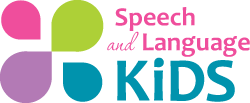

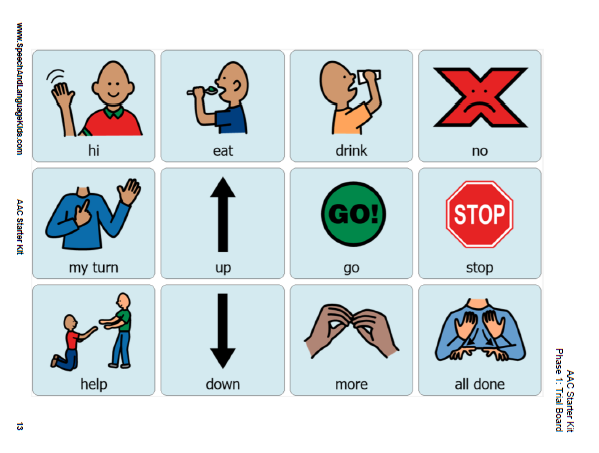
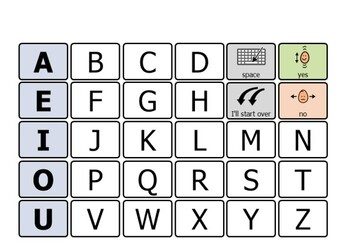
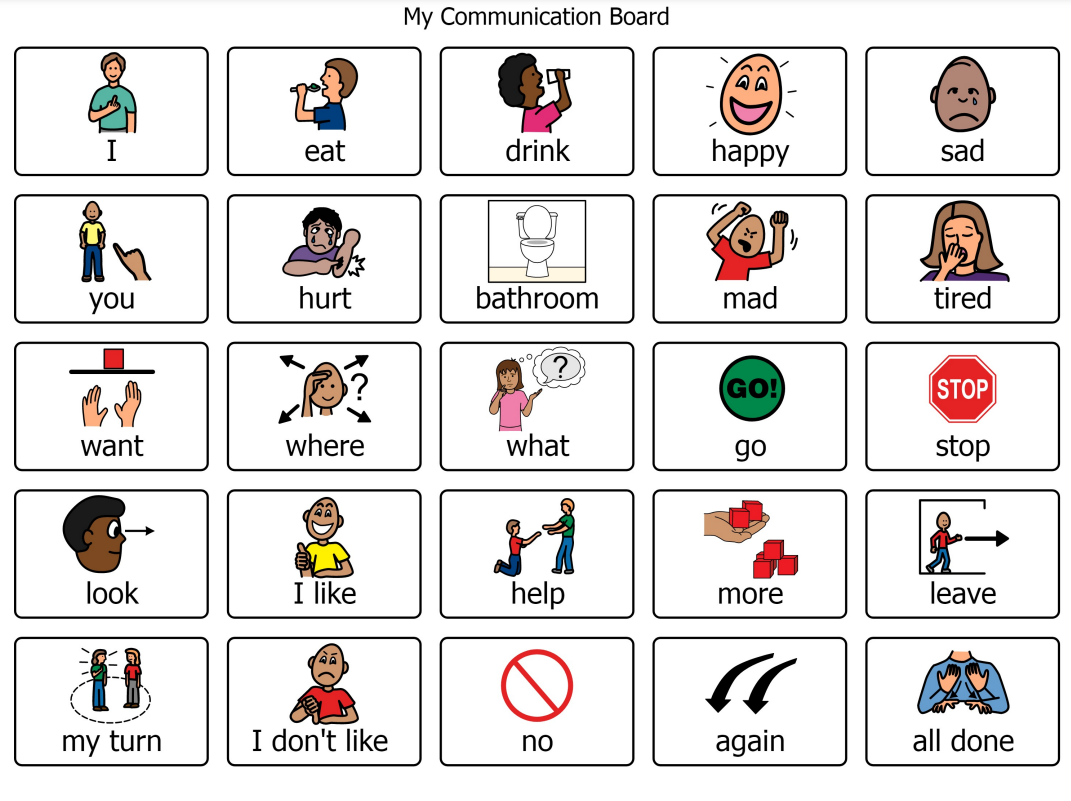
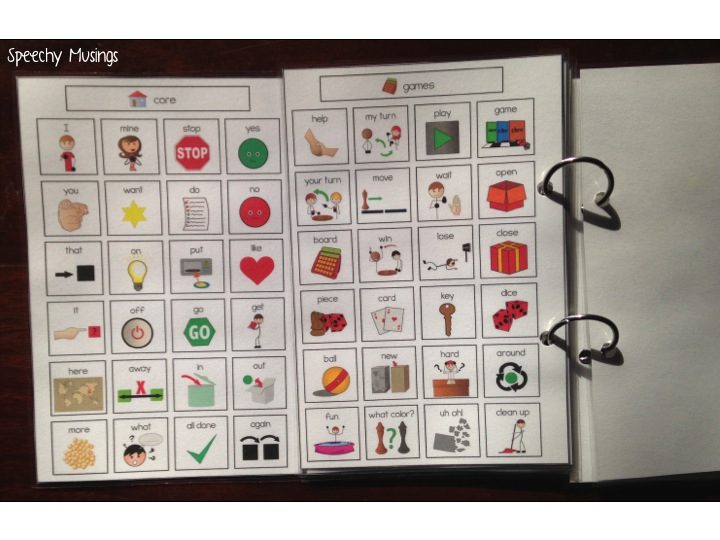

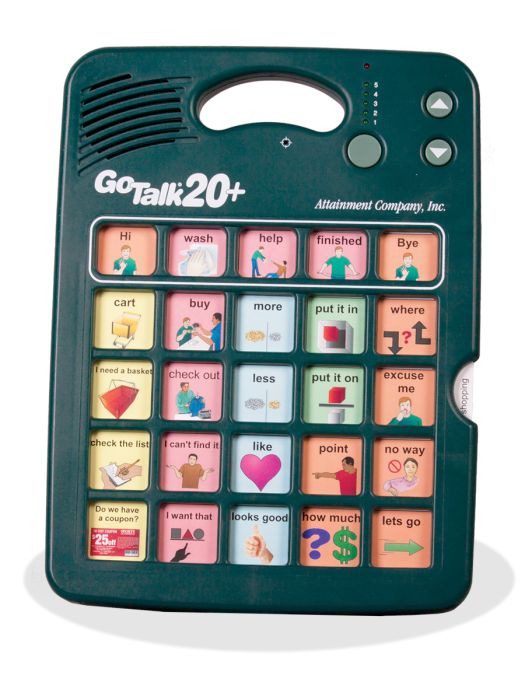
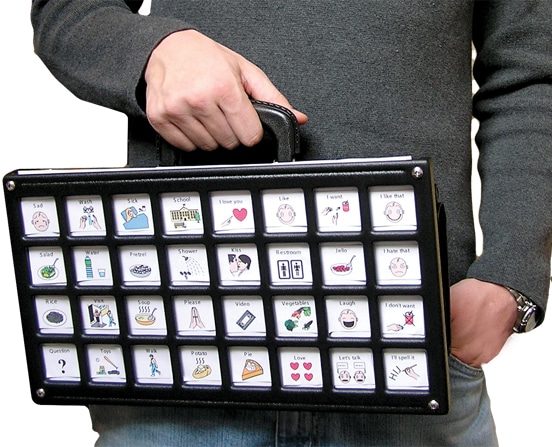

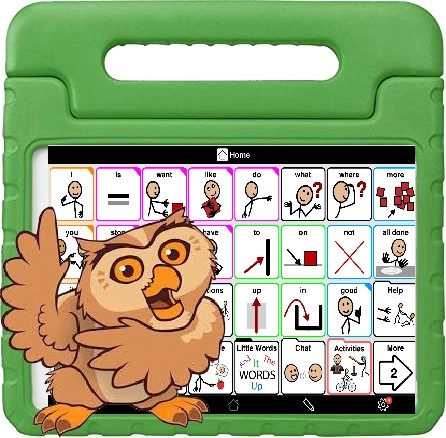
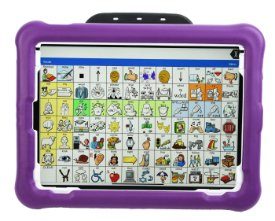
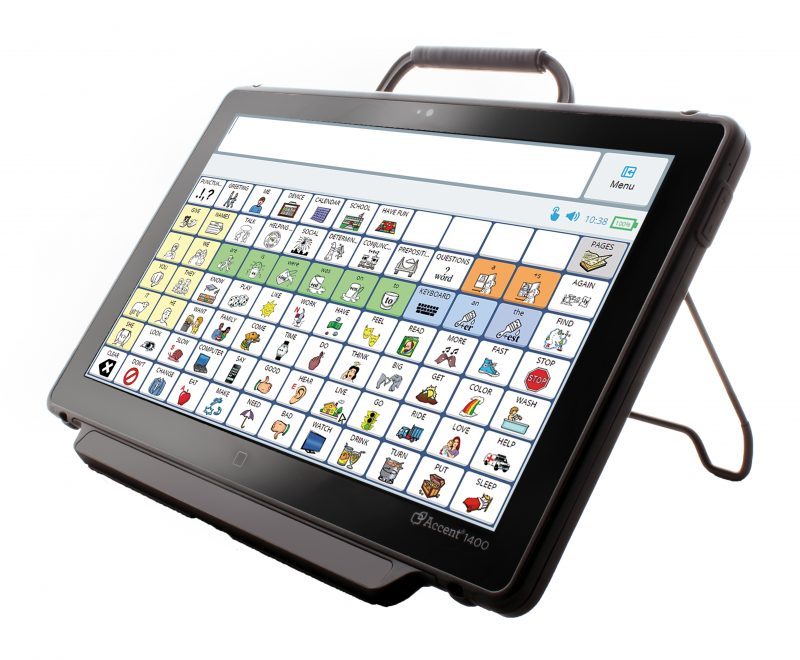
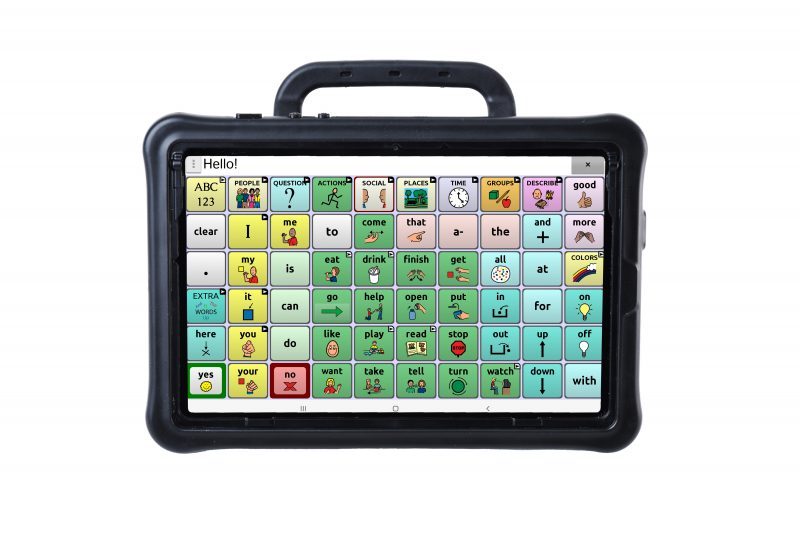
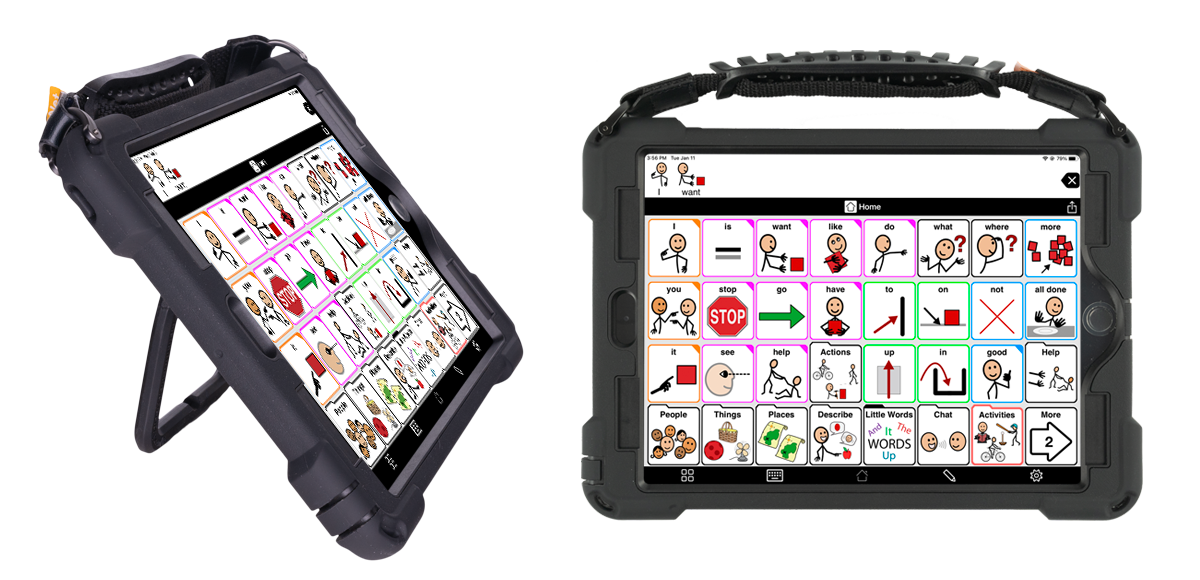
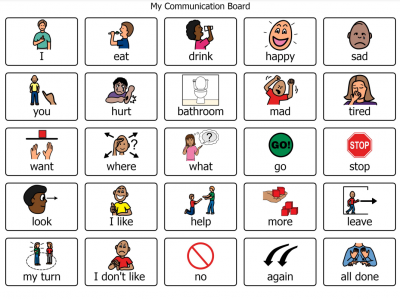
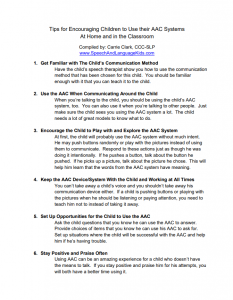
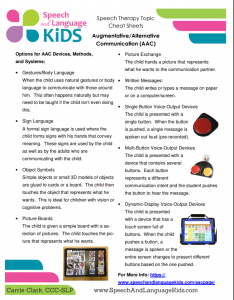
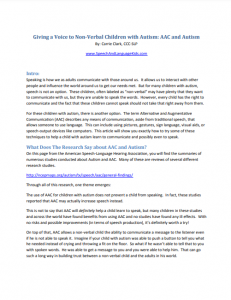
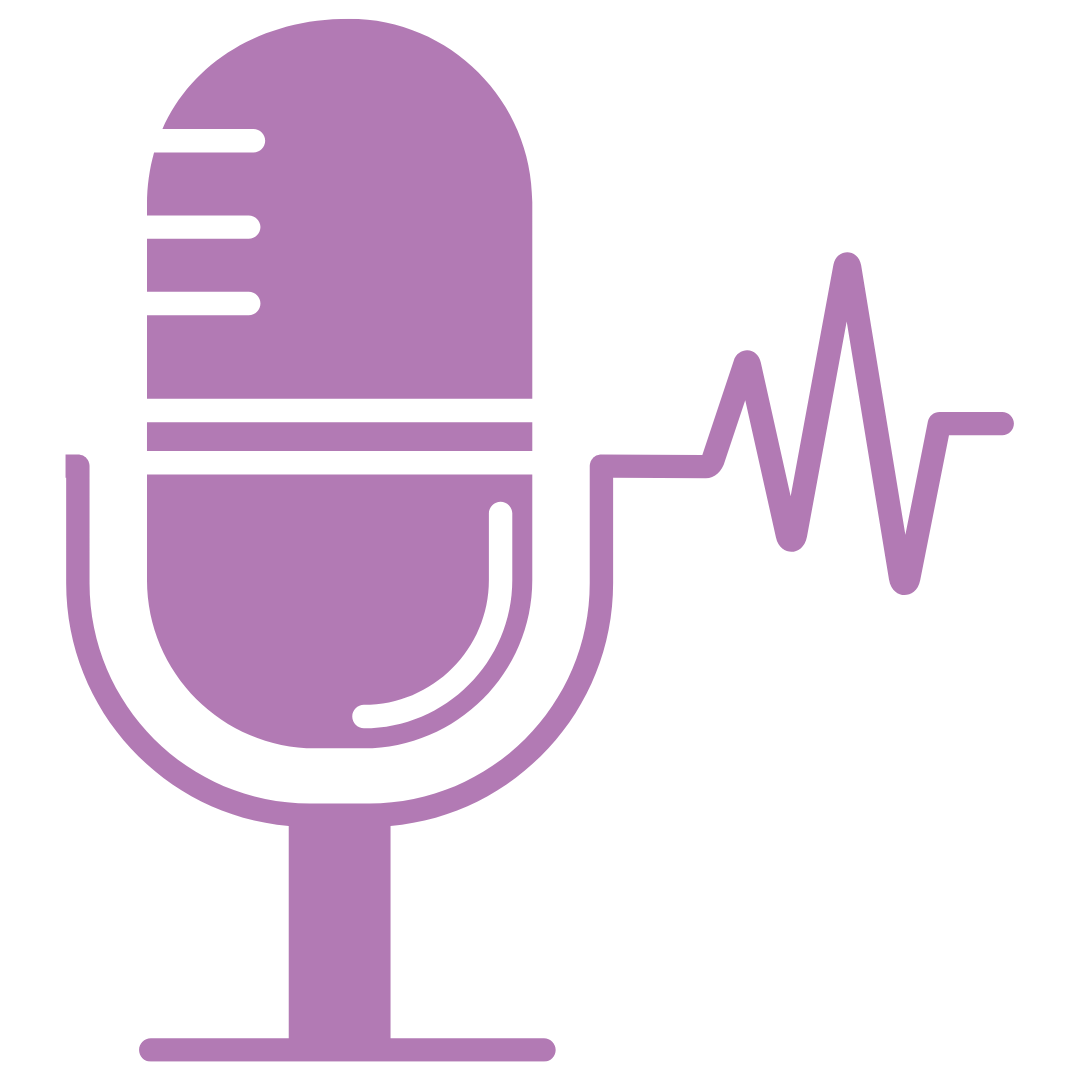

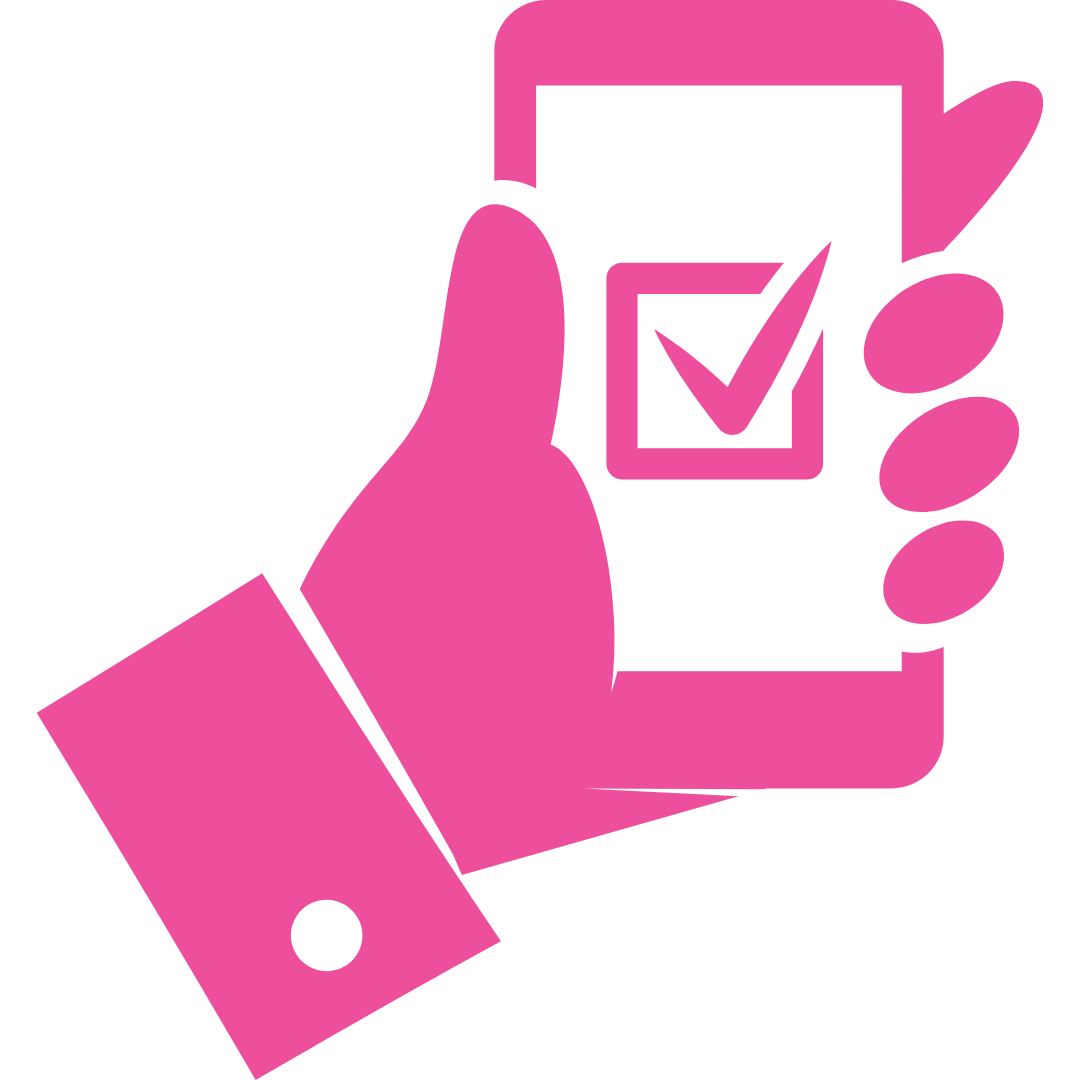
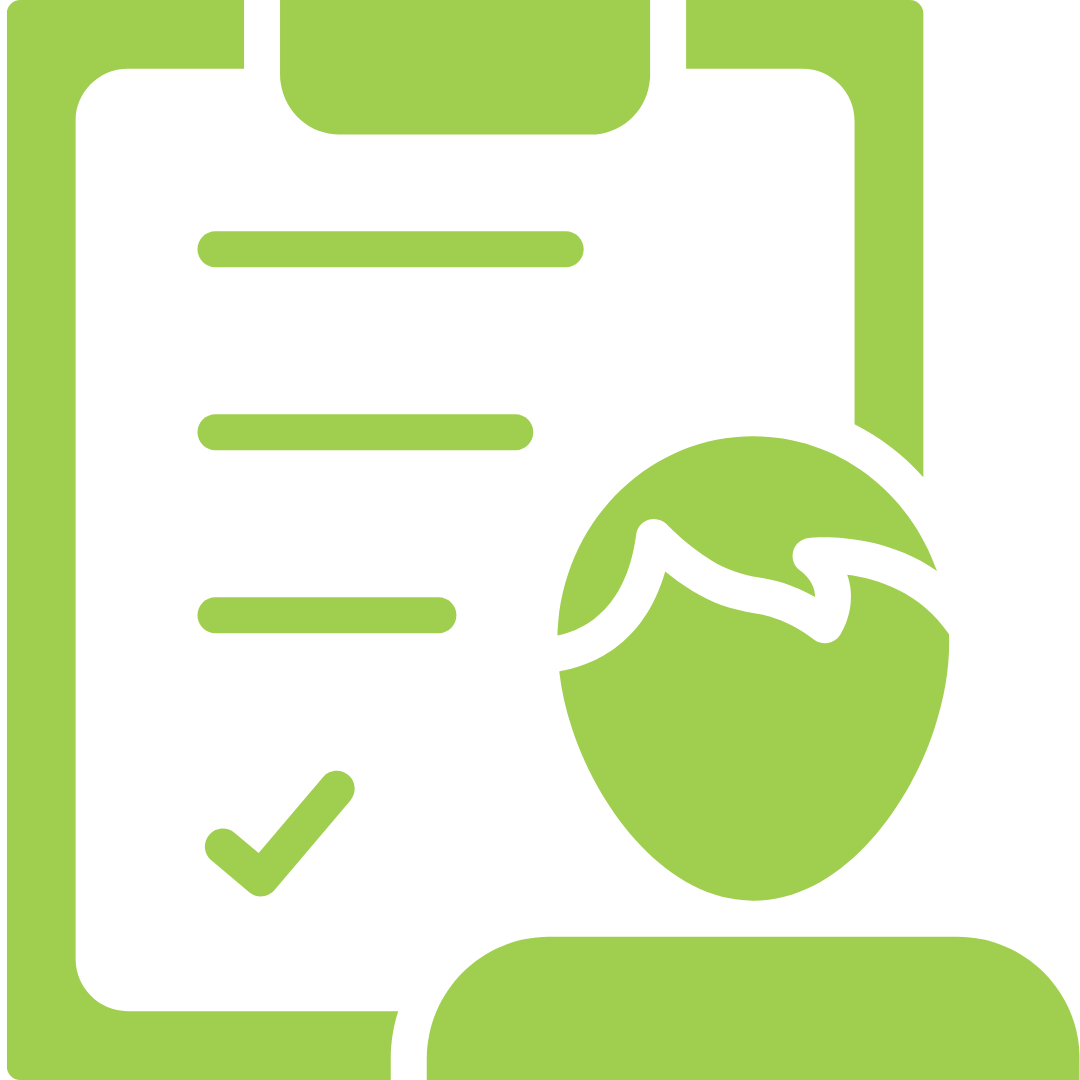
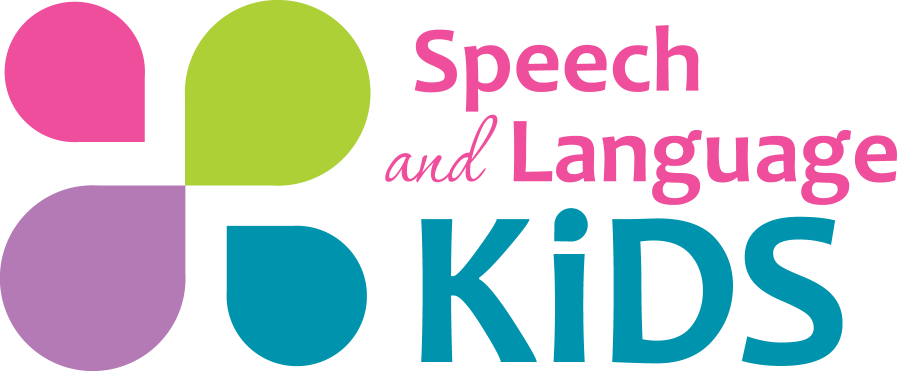
It is very important to get an AAC evaluation by a qualified SLP. Vendors are very helpful, but they are not speech pathologists and should not be taking the leading role in device selection and page set selection.
I agree!
Hello,
I like step one and I like that step two emphasises the importance of child led exploration of the device and being there to respond naturally to the varied things they might say whilst exploring – this for me would be part of the Opportunities, Observing and Responding parts of the Opportunities for MORSE acronym for aided language stimulation.
For me though something critically important in successful teaching and learning of AAC devices is missing from these steps, the most important thing in my opinion. I do think that modelling must be highlighted as so, so, so very important, perhaps the most important thing any family can do. Model, model, model the child’s device every day, as many times as possible, in natural, real situations, to say real things to real people. Aided Language Input, Aided Language Stimulation, modelling – we can’t underestimate just how important it is for AAC users to see their device used by the people they love and spend time with to communicate for real reasons. It’s just so so important and to neglect it jeopardises the child’s success at ever learning how to use their communication device. The stats regarding how many hours of modelling a typically developing child gets with spoken language before they begin to speak at around 18 months (4,370 waking hours!) means that if a child learning to use AAc only gets input on how to do this two times a week for 20-30 minutes at a time it will take them 84 years to have the same amount of experience with their device as an 18 month old child has with spoken language (Korsten, 2011, QIAT) so as much modelling in as a natural a situation as possible is crucial. The easier and more natural it is to model, the more likely modelling will happen so it’s good to help families do this rather than worry so much about which word they must focus on first and which one next, I believe.
I think it’s also really important to talk about multimodal communication and the need to respect ALL communication modes. I don’t think it’s wise to tell people new to supporting beginner AAC users to say things like “use your talker” or “show me on your talker” if the child / adult has already successfully communicated what they want by holding your hand, taking you to it and pointing. Such comments may cause frustration, breakdown the flow of communication and could damage the communication strategies they already have. Causing frustration for the child can lead to frustration for the families and could quickly lead to device abandonment. We all use multiple modes of communication across our daily lives. It would be more respectful in my opinion if all the child’s communication attempts were recognised and validated and that the flow of communication was not disrupted by making the child communicate in another way. I think it would be better if instead of disregarding the child’s communicative intent and disrupting the flow and pleasure of successful communication the adult responded to the child’s communication efforts by modelling how the child could have used their device to make their point more efficiently, clearly etc. The adult could activate the symbol for the item the child has indicated seek clarification using the device by adding another word because maybe the child didn’t actually want that item they brought the adult too, perhaps they just wanted to show it, or give it back, or indicate yes, I’ve got one too having overheard a conversation or shared a book… We can’t always assume it’s about indicating wants. And the more we model the different reasons for communicating over just wants the better!
I am also uncomfortable with steps four and five being so focused on requesting and no mention of other reasons for communicating as well as being very test oriented, setting up choice making situations and making the child ‘perform’ before introducing a wider variety of choice or introducing combining of words. I think the more naturally we can encourage and support communication learning the better. We naturally expand the utterances of young babies and toddlers before they are clearly using many single words and in my experience the more we can make teaching a child learn to use their AAC system seem a natural extension of this, the more confident families will be to just start exploring rather than feeling they need to set up teaching times, the more positively and easily they will view their role in teaching their child to learn AAC.
I do think it is helpful to have go to lists like these, I just think we need to be careful not to overload families with the guilt of having to fit in more things when actually, the more natural the better most of the time. Just my thoughts however!
Laura, you rock! I love the points that you made here. In fact, I love it so much that I added it to the main section of this article so others will see it as well. I’m going to send you an email to ask you for a little more information, keep a look out for it. You may want to check spam if you don’t see it. Thanks!
Thank you so much Laura! This was so helpful…xxx.
@Laura preach it sister!
I started reading this and thought, what about ALI and modelling – but was too lazy to put the time in to write something thoughtful.
Great article all in all.
I agree, Armen! I have created a follow-up post to this that addresses the need for modeling: http://www.speechandlanguagekids.com/help-child-use-aac-home-classroom-hint-easier-think/
Great read. Thanks.I was wondering if there any social stories or picture books about a new communication device that are appropriate for a 4 year old.?
I’m sure someone has made one out there but I don’t know of any! You might check on the materials exchange on http://www.speakingofspeech.com. I know they have a few social stories on there.
Great read! I Love the idea of being more natural about teaching children to use AAC!
Me too! I’m glad you liked it!
Hi Carrie,
My child is 4 years old . He is non verbal and autistic.
He is on PECS stage 3( travellers stage).
He exchanges around 20-25 pictures not only with his parents but also his grandparents, nanny and therapist.
I would like him to start with AAC as he has made a lot of progress with pecs.
Could you please tell me how to choose a good AAC app and how to use AAC for my son.
Do you have an online AAC training course?
Regards,
Rita
Hi, Rita -Thank you so much for reaching out. Unfortunately, we get a ton of questions every day about how to solve specific speech/language problems. Since we have such a small staff, we aren’t able to answer every question that comes through on the website, social media, or via email. If you are a parent, we suggest you reach out to a local speech-language pathologist who can work with your child directly and answer your question.
If you are another speech-language professional, we have created a membership where we pay a full staff to answer questions like this on a regular basis. We would be more than happy to answer your question inside the membership program. We’re able to answer more questions in here because we have a full library of questions that we’ve already answered so our staff can either link you to the answer if it exists, or write you a custom response if needed. We’d love to see you inside the membership!
Click Here to Become a Member: https://www.slpsolution.com/pediatric-signup/
Hi! who is the author of this article?
Hi, Julia-Carrie Clark wrote this post. Did you have a specific question of her?
hello, i am new to this, but i have been trying to get my son an AAC device that his school speech teacher uses also!
— im having a hard time choosing which type,
what is the best one that will help my 5 year old learn how to properly express himself until he can learn to speak ?
Hi, Lanna-Here is a link to some suggestions on Carrie’s site: https://www.speechandlanguagekids.com/cheap-easy-use-augmentative-alternative-communication-aac-devices/.
Great article very useful, definitely going to share with my parents.
great i would like to mention that the letter low-tech is the best type of aac